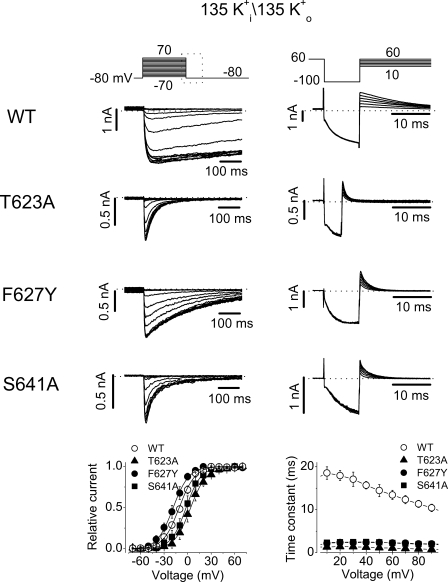Figure 9.
Gating properties of WT, T623A, F627Y, and S641A hERG channels in the symmetrical K+ conditions. Both pipette and bath solutions contained 135 mM K+. The voltage protocols are shown at the top of each panel. Left, activation properties of various hERG channels. Note that only a portion of the tail currents corresponding to the box area in the voltage protocol is shown. Peak tail currents were plotted against the test voltages and fitted to a Boltzmann function to obtain the activation curves. The rising and the decay phases of the tail currents were fitted to the single exponential function, respectively, to obtain the time constant of recovery from inactivation and to estimate the deactivation time course. Compared with WT channels, the deactivation of all three mutant channels was significantly faster. Right, inactivation properties of various hERG channels. The current decay upon each test voltage was fitted to a single exponential function to obtain the inactivation time constants (τinact), which are plotted against the depolarizing voltages at the bottom of the panel. The T623A, F627Y, and S641A mutations drastically accelerated hERG inactivation at all tested voltages.

